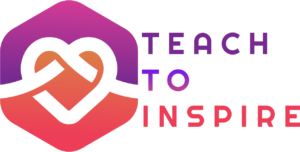Curriculum development is at the heart of education, shaping the learning experiences of students and guiding teachers in their instructional practices. An effective curriculum serves as a roadmap for educators, ensuring that the right content is delivered in a coherent and meaningful way. However, developing a well-designed curriculum requires careful planning and consideration of various factors. In this blog post, we will explore the art of curriculum development, unveiling effective strategies and best practices that can help educators master this essential skill.
Understanding the Basics of Curriculum Development
Before diving into the intricacies of curriculum development, it is important to grasp the fundamentals. A curriculum encompasses more than just a syllabus; it is a comprehensive plan that outlines the learning objectives, content selection, instructional strategies, and assessment methods. These key components work in harmony to create a holistic learning experience for students.
Step-by-Step Guide to Curriculum Development
- Conducting a Needs Assessment
The first step in curriculum development is conducting a thorough needs assessment. This involves identifying the needs and goals of learners, analyzing existing curriculum and resources, and gathering input from various stakeholders. By understanding the specific requirements of the target audience, curriculum developers can tailor their approach to ensure relevance and effectiveness.
- Setting Clear Learning Objectives
Learning objectives act as a compass, guiding curriculum development. They should be specific, measurable, achievable, relevant, and time-bound (SMART). Aligning objectives with educational standards and considering Bloom’s taxonomy for cognitive levels can help ensure a well-rounded curriculum that promotes deep learning.
- Designing a Logical Scope and Sequence
A logical scope and sequence ensure a logical progression of content and skills throughout the curriculum. By carefully sequencing topics in a developmentally appropriate manner, educators can scaffold knowledge and build upon previous learning. Balancing the breadth and depth of the curriculum is essential to provide students with a comprehensive understanding of the subject matter.
- Selecting Appropriate Instructional Strategies
Effective instructional strategies engage students and promote active learning. Consider learners’ preferences and needs when selecting instructional methods. Incorporating a variety of techniques, such as collaborative learning, problem-solving activities, and technology integration, can enhance student engagement and deepen understanding.
- Developing Effective Assessments
Assessments play a crucial role in evaluating students’ progress and informing instructional decisions. It is important to create varied and authentic assessment methods that align with the learning objectives. Providing timely and constructive feedback to students not only helps them understand their strengths and weaknesses but also guides their future learning.
- Incorporating Differentiation and Personalization
Students have diverse needs and abilities, and curriculum developers must consider strategies to address these differences. By incorporating differentiation and personalization, educators can provide multiple pathways for students to achieve the desired learning outcomes. Adapting instructional materials, offering choices, and providing flexible learning opportunities can empower students to take ownership of their learning journey.
Best Practices in Curriculum Development
To ensure the highest quality curriculum, educators should follow these best practices:
- Collaboration and Communication
Curriculum development is a collaborative process that benefits from the input of subject matter experts and educators. Promoting interdisciplinary collaboration and fostering effective communication among stakeholders ensures a well-rounded and comprehensive curriculum.
- Continuous Evaluation and Improvement
Curriculum development is an iterative process that requires continuous evaluation and improvement. Monitoring curriculum effectiveness, collecting and analyzing data, and seeking feedback from students and teachers are vital for ongoing revisions and enhancements.
- Professional Development for Curriculum Developers
Curriculum developers must stay updated with the latest research, trends, and educational practices. Engaging in professional development opportunities such as attending workshops, conferences, and collaborating with peers can enhance their knowledge and expertise in curriculum development.
Challenges and Solutions in Curriculum Development
While curriculum development is a rewarding endeavor, it is not without challenges. Time and resource constraints, resistance to change, and adapting to evolving educational needs and trends can pose hurdles. However, by prioritizing effective time management, engaging stakeholders in the process, and embracing a growth mindset, educators can overcome these challenges and ensure the development of high-quality curricula.
Takeaway
Mastering the art of curriculum development is an essential skill for educators and curriculum developers. By following the step-by-step guide and implementing best practices, educators can create impactful curricula that enhance student learning experiences. Effective curriculum development requires careful planning, collaboration, continuous evaluation, and a commitment to professional growth. Let us embrace the art of curriculum development to unlock the full potential of our students and empower them to succeed in their educational journey.

